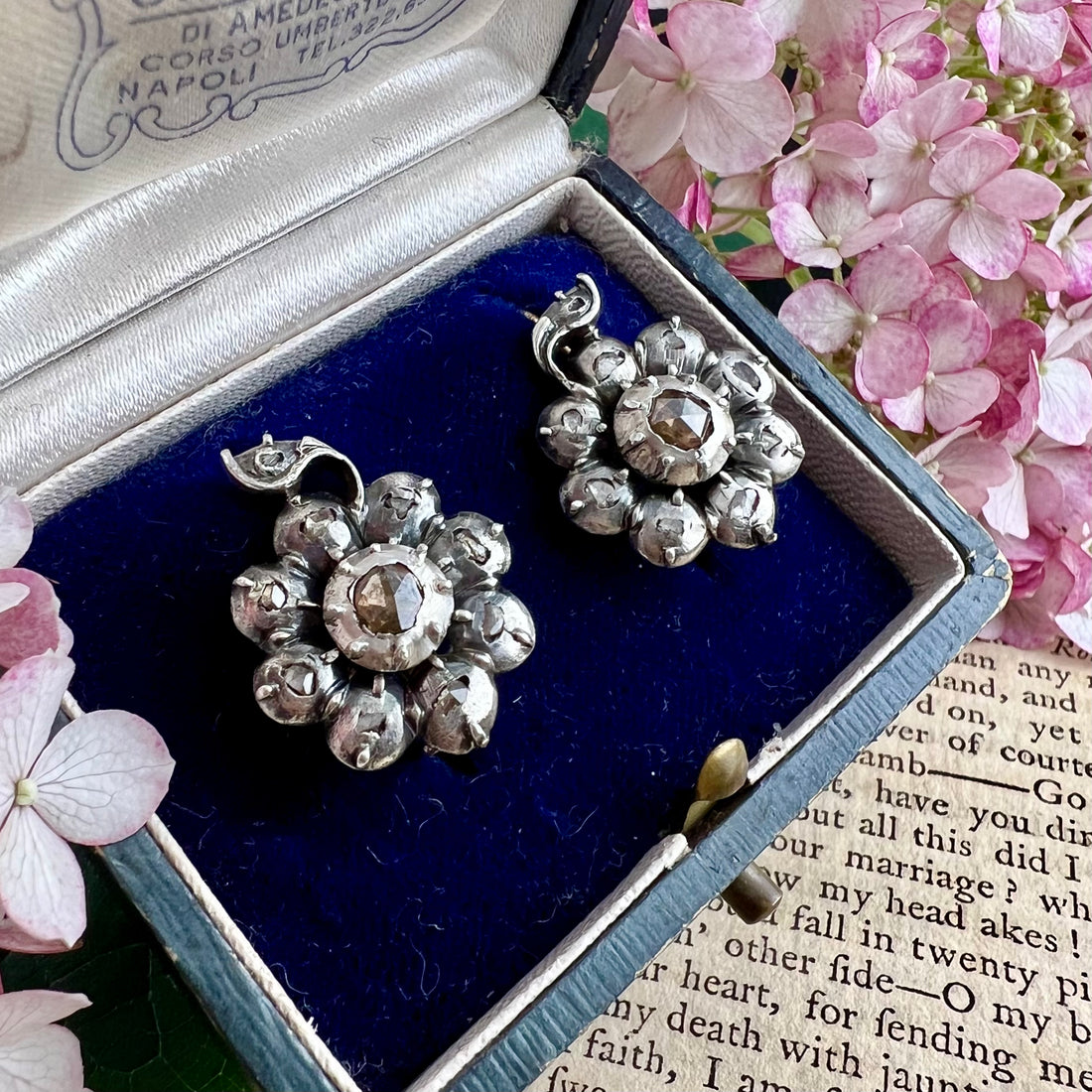The crimp setting, from the 17th and 18th centuries until around 1820, was a special method of setting diamonds to maximize their brilliance while simultaneously protecting them. This setting style covered most of the stone, leaving only the upper portion of the diamond visible. This was achieved by a thin layer of metal that covered almost the entire gem, except for a small central portion.
The crown, that is, the part of the stone that rises from the belt towards the table, was generally hidden under a silver structure.
This type of setting not only protected the stone, but also helped enhance its sparkle by concentrating the light on the visible table.
The night setting technique was particularly popular in evening jewelry, hence the name "à la nuit." Eighteenth-century goldsmiths prized this technique for its ability to lend a sophisticated and mysterious look to jewelry. This style was used in various types of jewelry, including rings, brooches, earrings, and necklaces.
Night-set diamond earrings, for example, often featured intricate designs that exploited this technique to maximize the play of light.
In short, 18th-century ring setting was a fine art that combined aesthetics and functionality, allowing diamonds to shine to their fullest while maintaining a protected, long-lasting appearance.
The rare and expensive diamonds were thus enclosed as if in a casket that preserved them for us for over two centuries.
The size of the gems was only guessable but not flaunted and exposed to the gaze of ill-intentioned people.
Elegance was a flash, moments of quick sparkles in a rarefied atmosphere.

